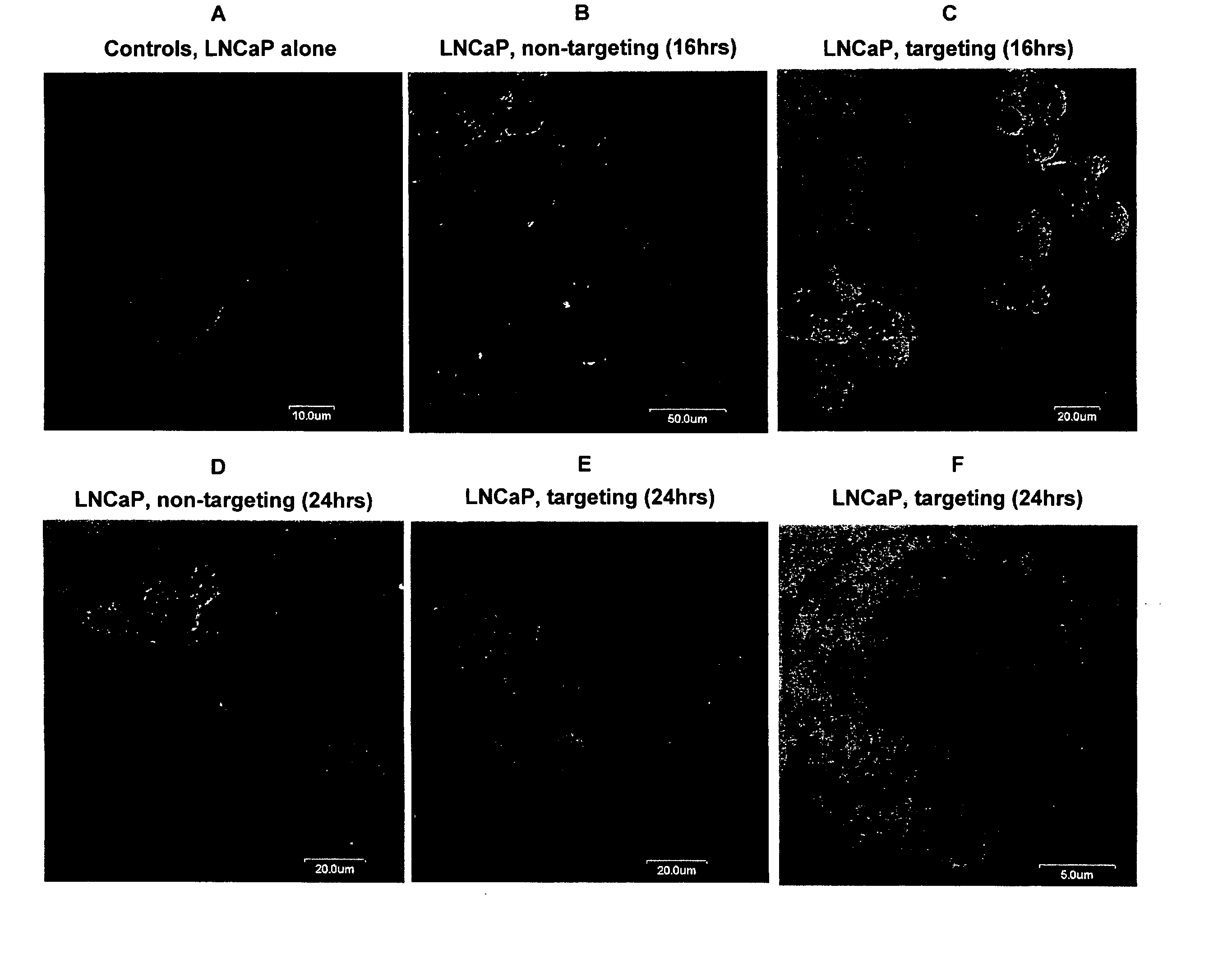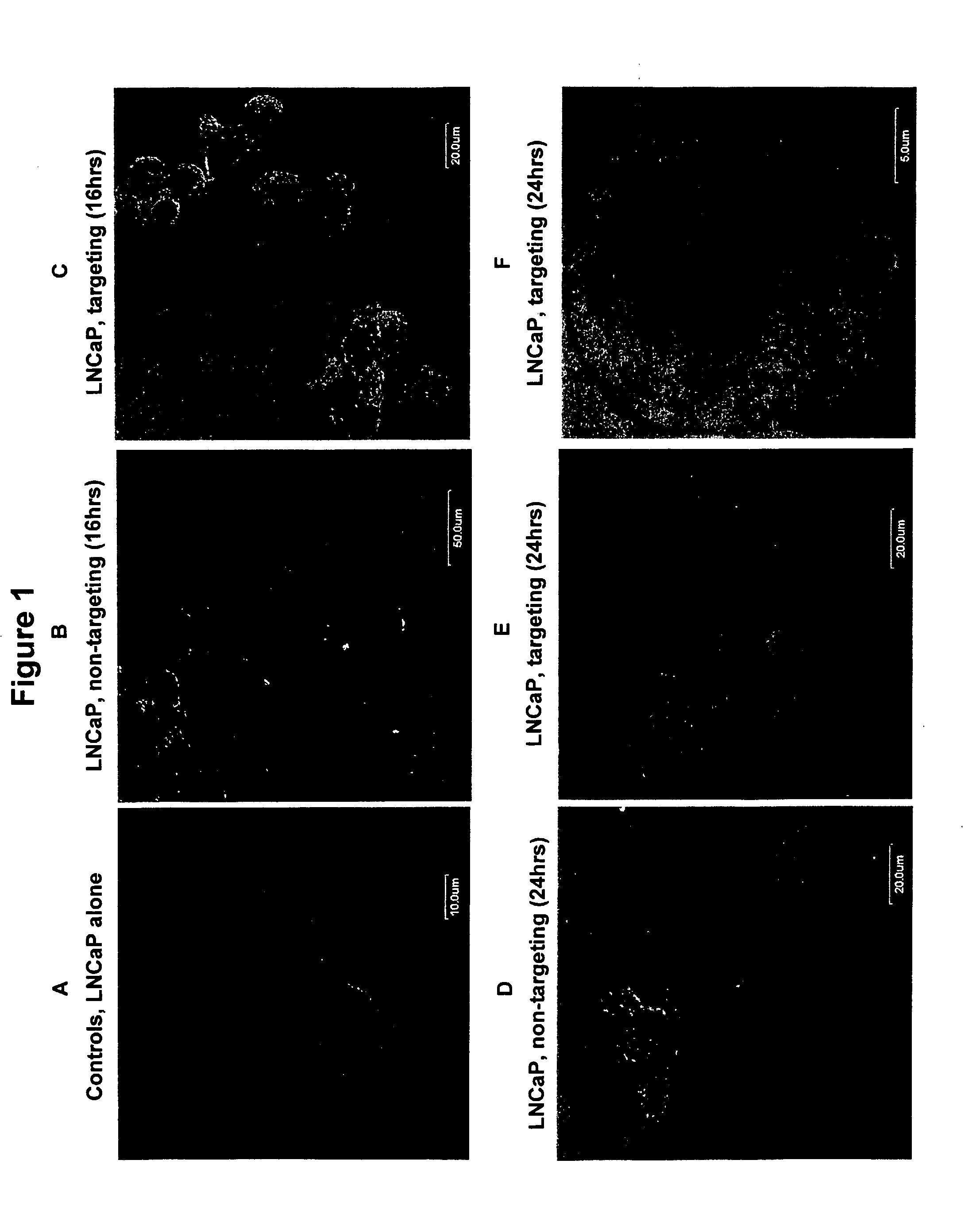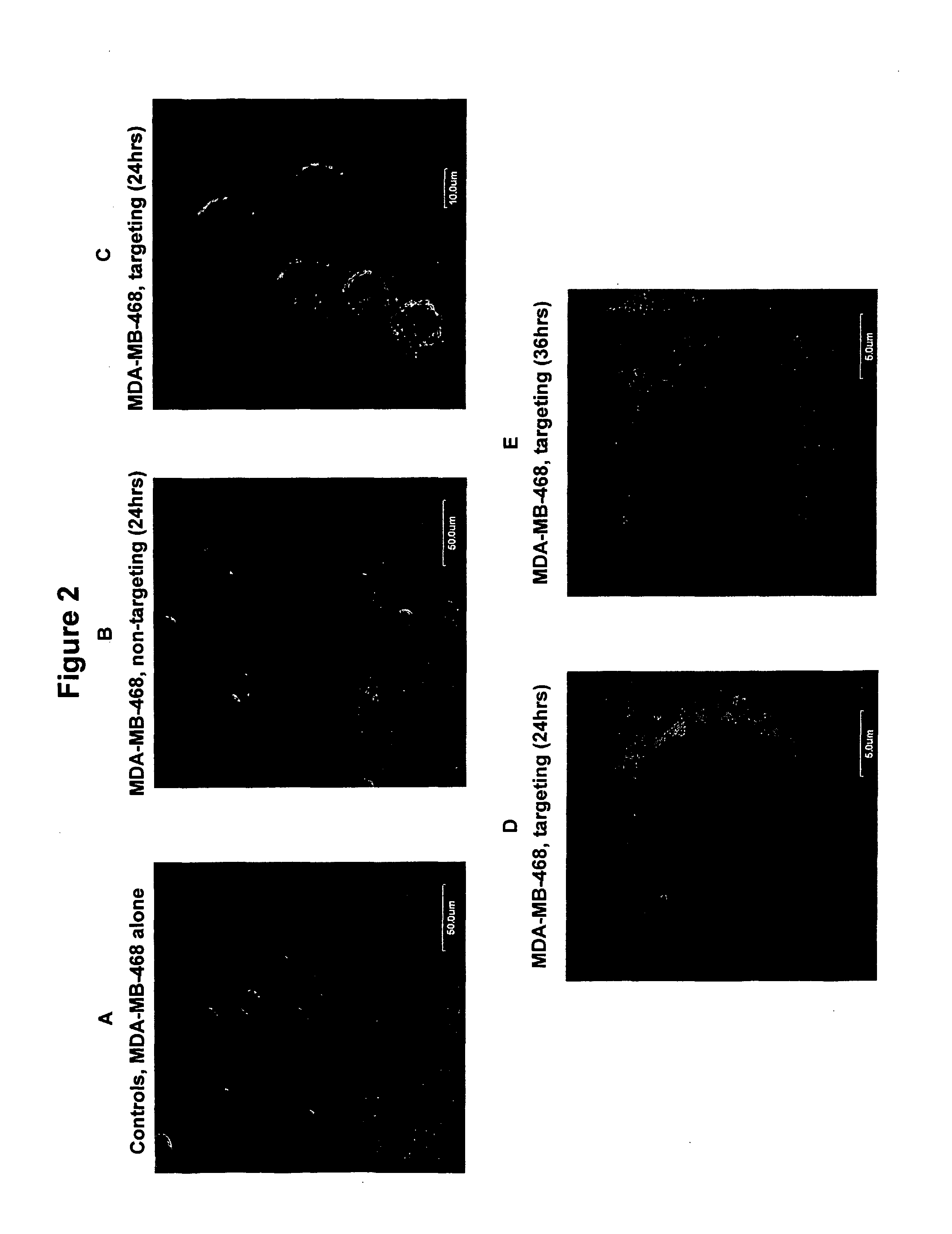Targeted Gene Delivery to Non-Phagocytic Mammalian Cells Via Bacterially Derived Intact Minicells
a technology of phagocytic mammalian cells and minicells, which is applied in the direction of vectors, non-active genetic ingredients, fusion polypeptides, etc., can solve the problems of limited clinical application, viral vectors pose serious safety concerns, and difficulties in recombinant virus manufacture and distribution, so as to inhibit the expression or function of a target protein and increase the expression or function of a desired protein
- Summary
- Abstract
- Description
- Claims
- Application Information
AI Technical Summary
Benefits of technology
Problems solved by technology
Method used
Image
Examples
example 1
Highly Efficient Binding and Receptor-Mediated Internalization of Bispecific Antibody-Targeted Minicells into Non-Phagocytic Human Prostate Carcinoma Cells
[0075] This experiment demonstrates that a bispecific antibody with Fab fragments carrying anti-S. typhimurium LPS and anti-androgen receptor binding specificities can enable binding and receptor-mediated internalization of S. typhimurium-derived minicells into prostate carcinoma cells that are known to over-express the androgen receptor on the cell surface.
[0076]S. typhimurium minCDE-mutant strain generated previously (patent application, PCT / IB02 / 04632) was transformed with recombinant plasmid pORF5-HSV1tk::Sh ble (Invivogen, San Diego, Calif., USA). The plasmid is a mammalian gene expression vector that expresses the HSV1tk::Sh ble fusion gene under the control of the EF-1α / eIF4g hybrid promoter. The HSV1tk is a suicide gene from Herpes simplex serotype 1 virus (HSV1) and encodes an enzyme, thymidine kinase, that can convert ...
example 2
Highly Efficient Binding and Receptor-Mediated Internalization of Bispecific Antibody-Targeted Minicells into Non-Phagocytic Human Breast Adenocarcinoma Cells
[0085] Example 1 demonstrated that a bispecific antibody with anti-LPS (minicell specificity) and anti-androgen receptor binding specificity can efficiently enable strong binding to the androgen receptor on a non-phagocytic mammalian cell, the prostate carcinoma cell. Additionally, the results demonstrated that the receptor binding triggered receptor-mediated endocytosis of the recombinant minicells at a high efficiency. This example demonstrates that the above-observed phenomenon is generalized and that the invention and discover are applicable to a range of different endocytosis-competent receptors, on different non-phagocytic mammalian cells.
[0086] More specifically, this experiment shows that human breast adenocarcinoma cells (MDA-MB-468, ATCC; human mammary epithelial cells; non-phagocytic) can be targeted via a bispecif...
example 3
Highly Efficient Binding and Receptor-Mediated Internalization of Bispecific Antibody-Targeted Minicells into Non-Phagocytic Human Ovarian Carcinoma Cells
[0088] Examples 1 and 2 demonstrated that a bispecific antibody with anti-LPS (minicell specificity) and either anti-androgen receptor binding specificity or anti-EGFR specificity can efficiently enable strong binding to the androgen receptor or EGFR on a non-phagocytic prostate carcinoma cells and breast carcinoma cells respectively. Additionally, the results demonstrated that the receptor binding triggered receptor-mediated endocytosis of the recombinant minicells at a high efficiency. This example further demonstrates the general applicability of the invention and discovery.
[0089] Accordingly, this experiment demonstrates that human ovarian carcinoma cells (SKOV-3, ATCC; epithelial cells; non-phagocytic) can be targeted via a bispecific antibody carrying Fab fragments with anti-S. typhimurium LPS (minicell surface binding spec...
PUM
| Property | Measurement | Unit |
|---|---|---|
| size | aaaaa | aaaaa |
| size | aaaaa | aaaaa |
| diameter | aaaaa | aaaaa |
Abstract
Description
Claims
Application Information
 Login to View More
Login to View More - R&D
- Intellectual Property
- Life Sciences
- Materials
- Tech Scout
- Unparalleled Data Quality
- Higher Quality Content
- 60% Fewer Hallucinations
Browse by: Latest US Patents, China's latest patents, Technical Efficacy Thesaurus, Application Domain, Technology Topic, Popular Technical Reports.
© 2025 PatSnap. All rights reserved.Legal|Privacy policy|Modern Slavery Act Transparency Statement|Sitemap|About US| Contact US: help@patsnap.com



